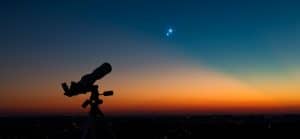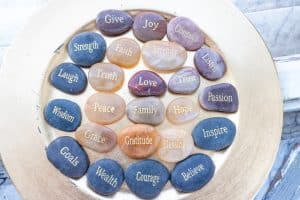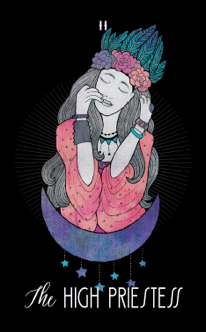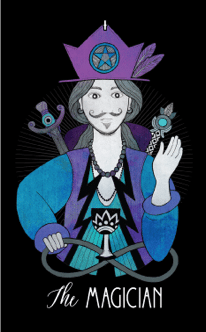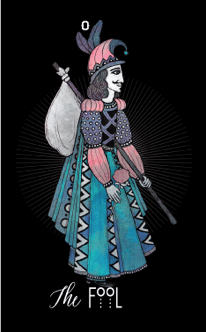If you read your horoscope, then you are already familiar with general astrology. In layman’s terms, astrology is the theory that the specific positions of the stars and the way the planets move about the solar system have an impact on the lives, events, and behavior of human beings. However, did you know that there are different types of astrology? In modern times, there are approximately 12 different types of astrology that are practiced, not including historical traditions. In fact, almost every culture on the planet has practiced some form of astrology over the centuries. For example, the Aztecs and Incas in the Americas had astrology; the Egyptians, the Celtics, and then there’s even Mayan astrology, among several others.
Regardless, when it comes to the types of astrology used today, there are three major forms: Western (Tropical), Vedic, and Chinese. Within each one, there are additional specialized astrology types. Let’s take a closer look so you have a better idea of which one might be best for you to try out during your next psychic reading.
Western Astrology
Western astrology and Chinese astrology are a bit similar in that both systems are based on date and time of birth, with 12 symbols or signs used to communicate a specific meaning. However, there are differences that make each practice unique. Here are the key elements that define Western astrology
- Western Astrology was conceived by the Greeks and the Babylonians approximately 2,000 to 3,000 years ago. They believed that since the Sun is the center of the Solar System, the relationship of the Earth to the Sun is of utmost importance. It’s the Tropical Zodiac that actually measures the closeness of the Sun to the Earth’s tropics — the Tropic of Cancer and the Tropic of Capricorn.
- There are 12 Western signs: the Ram, Bull, Twins, Crab, Lion, Virgin, Scales, Scorpion, Centaur, Sea-Goat, Water Bearer, and Fish.
- The 12 signs (one for each month of the year) are based on constellations’ positions relative to the earth — note that the constellations were named according to Greek mythology. It’s believed that those born in the same month have similar traits. So, for example, those born under the sign of the Pisces (February 19 through March 20) like being alone, sleeping, music, romance, and spiritual themes, but hate being criticized, cruelty of any kind, and people who are know-it-alls.
- The Western astrological calendar is like a normal calendar year that is based on the Earth’s orbit around the sun — which serves as a catalyst for celestial alignment.
- Western zodiac star signs are also known as sun signs. The Vernal Equinox (the start of spring that occurs on or around March 22 each year), is when there are equal parts day and night for one day. Astrologically speaking, this is the true beginning of a new year. It was a Roman emperor who made January 1 the beginning of the calendar year but is by no means related to anything astrologically. Regardless, Western astrology rules that the first sign, Aries, begins around the Vernal Equinox, with the other signs proceeding in consecutive order.
- Aside from the constellations, the planets play a big role In Western astrology. It’s believed that they symbolize rudimentary motivations in the human psyche. While the Western system also utilizes two moon nodes (the north or ascending node and the south or descending node), the planets are still deemed to be more influential.
- There are four elements identified in the Western system and each astrological sign is associated with one of them. Water signs are compelled by emotion, earth signs are practical, fire signs are spontaneous, and air signs are cerebral.
Chinese Astrology
If you’ve ever been to a Chinese restaurant that had the Chinese zodiac on a placemat, then you already know a little bit about how their astrological system works. Of course, it’s more complex than simply, “if you were born in 1978 then you’re a horse.” Let’s take a look at what defines Chinese astrology so you can see the similarities (and differences) from Western astrology.
- As with Western astrology, there are 12 signs within the Chinese astrology system: the Rat, Ox, Tiger, Rabbit, Dragon, Snake, Horse, Goat, Monkey, Rooster, Dog, and Pig.
- The 12 signs were born out of a myth that believes when God was creating a calendar, all creatures on Earth were summoned to participate in a race. The first 12 to cross the finish line were bestowed signs within the Chinese zodiac system.
- Each of the zodiac animals was assigned to a specific month on the Chinese solar calendar, which means that each sign/animal relates with two out of the 24 solar terms for a time period.
- Unlike Western astrology where you have similar traits to those born in the same month, in Chinese astrology, you have similar traits/characteristics to those born under certain birth years — and not just your own.
- Birth year aside, Chinese astrology has three other key pillars that determine your fate: birth year, birth month, birth date, and birth hour. Chinese astrology is greatly influenced by the lunar phase at the time you were born. The four moon phases are new moon, waxing moon, full moon, and waning moon. Each phase is tied to a specific personality trait. For example, new moon individuals wish to be in different environments, waxing moon people are hard workers, full mooners are diplomatic, and those under the waning moon crave peaceful surroundings.
- The Chinese astrology system incorporates five different elements (each associated with a birth year), two of which are different from Western astrology — though each is linked to strong forces in your life, much like the Western philosophy. For example, fire signs are drawn to excitement, earth signs crave security, metal signs are considered orderly, water signs are susceptible to emotional bonds, and those under the wood element love to explore.
- Since animal signs are on 12-year cycles and there are five elements, math tells us that the Chinese zodiac cycle lasts an impressive 60 years.
Vedic Astrology
Vedic astrology (aka “Jyotish”), literally means “the science of light.” Vedic science comes from the Vedas, one of the oldest spiritual scriptures of India dating back to approximately 1,500-2,000 BCE. Vedic astrologers have a great reputation not only for their spiritual knowledge but for their ability to accurately make astonishing predictions. Here’s a closer look at the Vedic practice as it’s quite different from Western and Chinese astrology.
- Vedic astrology is the modern-day name given to the practice by Vedic astrologer David Frawley, but it is traditionally known as Indian or Hindu astrology. According to Vedic astrology, the planets are considered the karmas of the soul. In fact, karma is the central theme of Vedic astrology as it can have either good or bad consequences depending on our past lives.
- As mentioned, karma can have negative and positive connotations, however, the good news is the planets can offer assistance when it comes to balancing karmic movement, including alleviating suffering and helping one through a difficult time so that growth can occur.
- It’s not uncommon for Vedic astrology to incorporate medication, gemstones, affirmations, yoga, and ayurvedic medicine based on a specific planet that’s associated with it — it can be helpful to consult a Vedic chart for accuracy before engaging in one of these exercises because the wrong gemstone, for example, can do more harm than good.
- As mentioned, Western astrology uses the Tropical zodiac but Vedic astrology uses the Sidereal zodiac — Sidereal means “pertaining to the stars.” The sidereal system is based on the planets’ connection to the constellations of zodiac stars. In relation to the Earth, these fixed stars rotate, or move slowly backward, around one degree every 72 years.
- Unlike other forms of astrology, the Vedic practice doesn’t believe the relationship between the earth to the sun is accurate when it comes to measuring the signs. This is because of the precession of equinoxes, which basically means that every 72 years, the signs must move backward one day to remain in the proper astronomical position.
- One of the best things about Vedic astrology is the fact that it uses planetary periods of influence. This is key because these periods are really helpful when it comes to making predictions. When looking at a planet in its chart (sign, house, conjunctions, aspects, house lordship, strength) it’s easy for a reader to give specifics on what a person can expect to live during a planetary period. Even more, each period is distilled into sub-periods that last up to three years, thus making an even stronger and lengthier prediction. This could have anything to do with one’s career path, love life, health, and more.
When it comes to different types of astrology, this is just the tip of the iceberg. Speak to one of our Keen advisors today and choose the best type of astrology reading for you.





